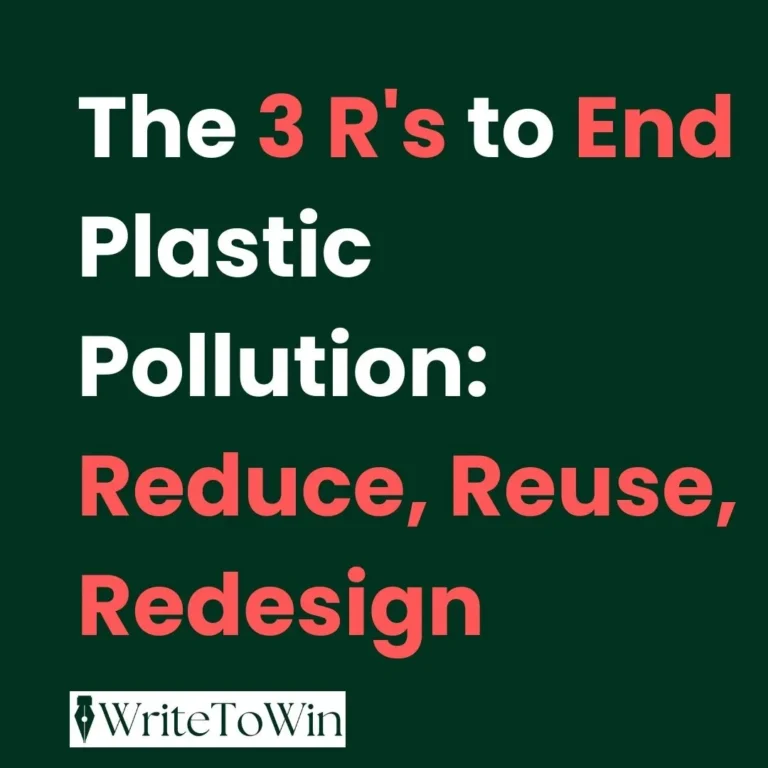1. Introduction
Environmental pollution is a problem in India due to uncontrolled growth in population, urbanization, and industrialization. The environmental problem due to pollution is multi-dimensional in nature, spans over effects on air and water quality, ecosystem, and human health. Environmental laws are the rules that protect our planet from pollution and harm.
India has dealt with such a multi-dimensional problem through a robust law and regulatory mechanism for the protection of the environment. The current research paper is an effort to make a holistic analysis of the current law and regulatory mechanism addressing environmental pollution in India and their role in preventing future pollution problems.

2. India's Legal and Regulatory Framework
India has realized that environmental pollution needs to be fought and has developed a sophisticated legal framework for environmental protection. The regime is a sophisticated chain of laws, regulation, and regulatory bodies.
2.1 Environmental Law
Water (Prevention and Control of Pollution) Act, 1974
Water Act attempts to control and prevent water pollution through regulation of the discharge of polluting substances into water. It also authorizes the Central Pollution Control Board (CPCB) and State Pollution Control Boards (SPCBs) for imposing pollution control permits and water quality standards and enforcement. Industrial units under the water act are forced to treat their effluents up to the standard level prior to its discharge into water bodies.
Air (Prevention and Control of Pollution) Act, 1981
The Air Act deals with the control of air quality, industrial discharge control, vehicle discharge, and other source discharge. CPCB and SPCBs are empowered under the Air Act, as is the case with the Water Act, to make provision for the control of the air quality and the imposition of the standards of emission. It prohibits the discharge of polluting substances into the air and mandates the installation of pollution control equipment in industries.
Environment (Protection) Act, 1986
Environment Act gives sweeping powers to the central government to take responsibility for environmental issues and to take up the charge of protecting the environment. It has made provisions for making rules and regulations concerning anti-pollution and pollution control. The act has made provisions for the redressal of numerous environmental issues, including the notification of environmentally sensitive areas and regulation of objectionable chemicals.
2.2 Regulatory Bodies
Environmental regulatory bodies have the mandate of enforcing and implementing environmental policy. India has a national agency known as CPCB at the national level and a state agency known as SPCB in each state. The agencies enforce action, issue permits, and demand compliance. The agencies are also information and knowledge centers when handling the environment.
2.3 Types of Regulations:
Command-and-Control Rules
India has used the command-and-control approach, which sets standards of emission, discharge, and pollution for industry and municipalities. The companies would need to comply with the standards, while they would require buying permits from the state. The Water Act, for instance, provides licensed water-borne pollutants, while the Air Act provides standards for emissions in industry and automobiles.
Market-Based Instruments
India has now implemented market-based tools for pollution abatement. One of them is the Perform, Achieve, and Trade (PAT). It renders the industries energy efficient and less polluting because it offers a platform for trading of energy efficiency certificates. The industries consuming less energy can buy certificates from the energy-efficient industries and thus generate a market-based incentive for energy efficiency.
Legal Framework of Waste Management
India has some legislation concerning waste management as well. Plastic Waste Management Rules, 2016, and Solid Waste Management Rules, 2016, constitute a legal framework for the management of plastic waste and solid waste, respectively. They mandate segregation, collection, recycling, and disposal guidelines. They also make the manufacturers responsible for safe disposal and management of their product after they have gone through their life cycle.
3. The Role of Legal and Regulatory Frameworks
Pollution Prevention
Indian environmental law places enormous focus on avoiding pollution. They regulate the effluents, demand pollution control technology, and promote cleaner production technology. They strive to reduce the quantity of pollutants that enter the environment at the source. Through the mechanisms of stringent regulations and pressurizing industry to adopt cleaner technology, such legislations try to ensure the environment is not polluted at all.
Monitoring and Enforcement
Monitoring and enforcement constitute the part and parcel of the regulatory function. The regulatory agencies such as the CPCB and the SPCBs have to carry out periodic inspection to ensure compliance with the environment. Non-compliance is rendered penal by demanding payment of the penalty, prosecution legally, or suspension of license. Monitoring of emission, effluent, and ambient air and water quality is to be carried out to determine compliance and to take corrective action on default.
Environmental Impact Assessment (EIA)
EIA is an essential practice in preventing the negative environmental impacts of a developmental project. EIA takes into account the likely impacts of the project and provides an opportunity for mitigation as and when necessary before the clearance of the project. The EIAs analyze the water and air pollution, biological diversity, and the potential threat of loss of habitats. India is trying to act proactively on the environmental side of developmental activities with EIAs.
Public Participation
Indian environmental law provides an opportunity for citizen involvement in environment decision-making. It provides the stakeholders and affected people with an opportunity to express their concerns, provide suggestions, and be involved in the life of regulation, thus bringing more transparency and accountability. Public hearing, public consultation, and offering environmental impact assessments provide an opportunity for the public to get involved in the making of environmental policies and schemes. It provides space to the interest of affected communities.
4. New Pollution Issues of India
Air Pollution
India also has air pollution, particularly in urban areas of the nation. A few of the causes of air pollution include motor vehicle emissions, industrial air pollution, construction activities, and burnings of agricultural wastes. The 2019 Lancet Countdown had positioned the approximate 1.2 million Indian fatalities of 2017 caused by air pollution. Most long-term health impacts of air pollution are respiratory disease, cardiovascular disease and reduced life expectancy.
Water Pollution
Water pollution in India is rampant, with sewage, industrial effluent waste, and agricultural runoff being common pollutants that end up in rivers, aquifers, and lakes. Water quality deterioration is causing serious safe drinking water and public health issues. Contaminated water sources can contribute to waterborne disease and long-term health consequences.
Plastic Pollution
India also has a burgeoning problem of plastic pollution. Single-use plastics are particularly an environmental issue of extreme urgency. There are no traditional recycling plants and plastic waste is handled in a wrong way, and so the problem arises, contaminating ecosystems and human health. Plastic pollution not only kills sea creatures but also finds its way into the food chain, and this adversely affects the health of human beings.
E-Waste
E-waste or electronic waste in India is increasing due to the speeding rate of technological progress and overuse of electronic items. Unscientific recycling and disposal of the e-waste lead to environmental as well as health impacts in the form of release of poisonous chemicals into the environment. While carrying out unscientific recycling in some regions, individuals and workers get exposed to harmful chemicals and poisoning.
5. Strengthening Legal and Regulatory Capacities
Additional Implementation
Institutionalization of enforcement capacity is the most prominent factor of enforcement. Institutions and industries must possess sufficient resources, manning, and training to enable enforcement of the environmental standards. It is an incentive in the sense that it makes non-compliance as expensive as possible to the industries. Enforcement must be transparent and predictable to the point that the public does not lose confidence in the regulatory institutions.
Promoting Technological Solutions
It should motivate industries to employ cleaner technology and make investments in anti-pollution technology with the goal of preventing pollution. Tax credits or subsidies on green technology use can stimulate use of green technology. Government R&D can also create new anti-pollution methods.
Facilitating Public Participation
More and improved regulations would be achieved through increased public engagement and public participation in environmental decision-making at the public level. Public participation can be guaranteed through public consultation, information campaigns, and participation of civil society. Public information campaigns can raise the public’s awareness of the environmental consequences of public action and bring about sustainable behavior.
Facing New Challenges
Legislation has to be prepared in an effort to deal with some of the ensuing pollution issues. Preparing regulations and incentives fully has to be tried in an effort to deal with these issues better. Regulating and incentivizing e-waste recycling and disposal, for example, can control e-waste pollution. Likewise, the enforcement of strict measures in an effort to deal with single-use plastics and recycling can control plastic pollution.
6. Action and Policy Recommendations
Even as India remains besieged by ecological deterioration, the following recommendations can guide policy and action:
Integrated Air Quality Management
India must closely manage city air pollution. This would entail the expansion of monitoring networks, promoting cleaner transport technologies and stringent emission standards on industry.
Improving Water Quality Monitoring
Water monitoring must be improved and anti-pollution habits must be practiced. There must be increased water body monitoring and increased controls over industrial and municipal wastewater discharges.
Plastic Waste Management
India can give topmost importance to plastic waste management through policymaking and policy-implementation to restrict single-use plastics as well as encourage recycling. Country-wide campaigns can ensure the use of plastic to its optimum capacity.
E-Waste Management
There ought to be e-waste law regulating the recycling sector in a manner that such disposal measures are set and implemented and the consumers are informed about e-waste dumping.
Research and Innovation
Green abatement technology and sustainable practices need to be backed by research and development. Public-private partnerships need to be encouraged to facilitate the marketing of innovation in pollution prevention and reduction.
Public Education and Public Engagement
Schools, community schemes, and mass media may create public awareness and involvement toward creating environmental awareness and enabling sustainable action.
Enhancing Enforcement Mechanisms
Effort has to be put into giving other strength to the enforcement mechanisms by ensuring the regulatory authorities are given the finance, training, and legal instruments necessary. Tighter sanctions for default have to be imposed across the board.
Interagency Coordination
Governments, non-governmental institutions, and regulatory bodies must join hands to prevent and regulate pollution. Coordination will certainly result in better and coordinated efforts towards conservation of the environment.
Actually, most of the case laws of the topic of environmental pollution and the legal and regulatory environment of India which you refer in your research paper are:
M.C. Mehta v. Union of India (1987)
This was a prominent case, famous as the “Taj Trapezium Case,” relating to air pollution in the region surrounding the Taj Mahal at Agra, a world heritage site. The Supreme Court of India went the extra mile to monitor pollution and safeguard the monument and, in the process, implemented stricter control and enforcement in the region.
Vellore Citizens Welfare Forum v. Union of India (1996)
Here, India’s Supreme Court applied the principle of “polluter pays” and ordered the industry to compensate for polluting the environment. The verdict legitimized strict environmental legislations as well as their enforcement.
Oleum Gas Leak Case (1986)
This was triggered by a leak of the gas in the Delhi Shriram Food and Fertilizer Plant. The plant was shut down by the Supreme Court, reminding businesses to abide by safety and environmental regulations.
Ganga Pollution Case (1985)
The issue was industrial effluent pollution of the Ganges River. The Supreme Court directed a series of measures to regulate the water pollution, such as re-location of industry, location selection of sewage treatment plants, and regulation of pollutant level.
Subhash Kumar v. State of Bihar (1991)
This case set the importance of right to a clean environment as a right under Article 21 of the Indian Constitution. It set the precedent that environmental protection is part of the right to life.
Indian Council for Enviro-Legal Action v. Union of India (1996)
This was an India case where the issue of dumping of toxic waste in India was involved. The Supreme Court formulated guidelines of safe handling and disposal of toxic wastes, i.e., regulation thereof.
Virender Gaur v. State of Haryana (1995)
In this case, the Supreme Court was addressing illegal mining that had resulted in environmental degradation. It attached utmost significance to environmental protection and sustainable development of mining activities.
Bichhri Village v. State of Rajasthan (1996)
Included among them was the industrial activity polluting the groundwater. The state was found guilty by the Supreme Court of acting negligently towards the conservation of the environment and was directed to take remedial measures.
Lavasa Corporation Limited v. Union of India (2012)
This was a suspected environmental offense in planning a hill city in and around Pune. It was a case involving environmental clearance and compliance with environmental law in major developments.
Samatha v. State of Andhra Pradesh (1997)
This is the question of rights of tribal communities living in forests in connection with forest products and protection of the environment for the purpose of acquisition of rights and livelihood of the indigenous people.
7. Conclusion
Legislative and regulatory measures are excellent tools of prevention and control of environmental pollution in India. India has made good efforts in the establishment of a strong legislative and regulatory framework for pollution control. New problems of pollution such as air polluton, water pollution, plastic waste, and e-waste need to be tackled with enthusiasm.
In making these frameworks more concrete, India will have to ensure more effective implementation, encouragement of cleaner technology, public participation, and rectification of some of the pending problems through regulations specially designed for the purpose of rectification.
These reforms will be the driving forces for prevention of pollution, protection of the environment, and improvement of the public health of the current and future generations of India.
8. Future Directions
As India will keep driving its growth and development and align it with nature’s sustainable means, the role of legal and regulatory regimes to manage and prevent environmental pollution will shift in far greater dimensions.
The directions will be new to utilize technology to enable better monitoring and enforcement, promote sustainable local industry practices, and make local communities proactively involved in pollution control.
Transcending new challenges and enhancing existing regulatory frameworks, India can head towards a cleaner, healthier, and sustainable environment for its citizens.
Pakhi is an environmentalist at heart, seeing the planet as both a shared home and a shared responsibility. She blends her passion for the environment with her love for the law, exploring how legal tools can protect nature and promote sustainable living. Her work aims to make complex ideas simple and inspire practical changes – proving that caring for the Earth and caring for people go hand in hand.







